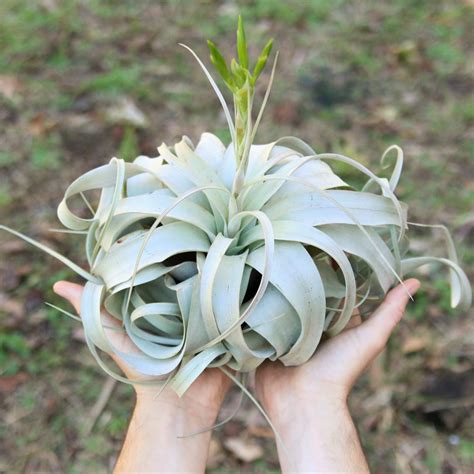Tillandsia Plant. Tillandsia is a large genus containing around 650 species. They offer an exotic look, showy blooms, entrancing fragrances, and limitless arrangement.

The rosettes are often spiraled to one side. Then, the blooms will turn to seed and fall to grow new plants. Once rare, tillandsia is now common in garden centers, where they are frequently sold as part of hanging gardens.
Air Plants From The Genus Tillandsia Are Naturally Found In The Americas, All The Way From The Southeastern United States Down To Central Argentina (Granados Mendoza Et Al., 2017).
In the wild, tillandsia is pollinated by moths, bats, and even hummingbirds. Most air plants which are classified as epiphytes (plants which grow on objects without soil), bloom only once in a life span. They have a distinct beginning, middle, and end.
Tillandsia Xerographica Is Often Considered The King Of Air Plants!
The flowers are clustered in an inflorescence that rises above the rosette. We've put the tillandsia air plants into another article because the care requirements are very. Air plants, aka tillandsia, have a definite life cycle.
Tillandsia Are Commonly Known As Air Plants, For Their Ability To Live Entirely Off Of Nutrients And Moisture In The Air In Their Native Habitats.
Due to their minimal root system they don't need to be grown in pots of soil. Almost all of them are epiphyte plants, which means that in nature they live on other plants that provide support. It can grow about 6 inches in height and has stems that are about 16 inches long.
Tillandsia Juncea Is A Flowering Air Plant Native To The Tropical Regions Of Central And South America.;
This means air plants can instead be hung, mounted or placed in terrariums, bottle gardens or other decorative containers with grit, stones or pretty much anything else you can think of. The plant should be placed no further than 90cm (35 inch) from the fluorescent tubes and can be as close as 15cm (6 inch). Tillandsia stricta can be grown in artificial light.
Commonly Known As Air Plants, The Genus Tillandsia Includes A Diverse Range Of Mostly Epiphytic Plants That In Their Natural Habitats Survive Attached To Other Plants.
This plant doesn’t need any soil to grow and can be kept in an air garden, terrarium, or mounted on wood. It is native to dry tropical areas of mexico, guatemala, el salvador and honduras and grows in the upper branches of tall trees. It can be grown indoors or outside in mild climates.
